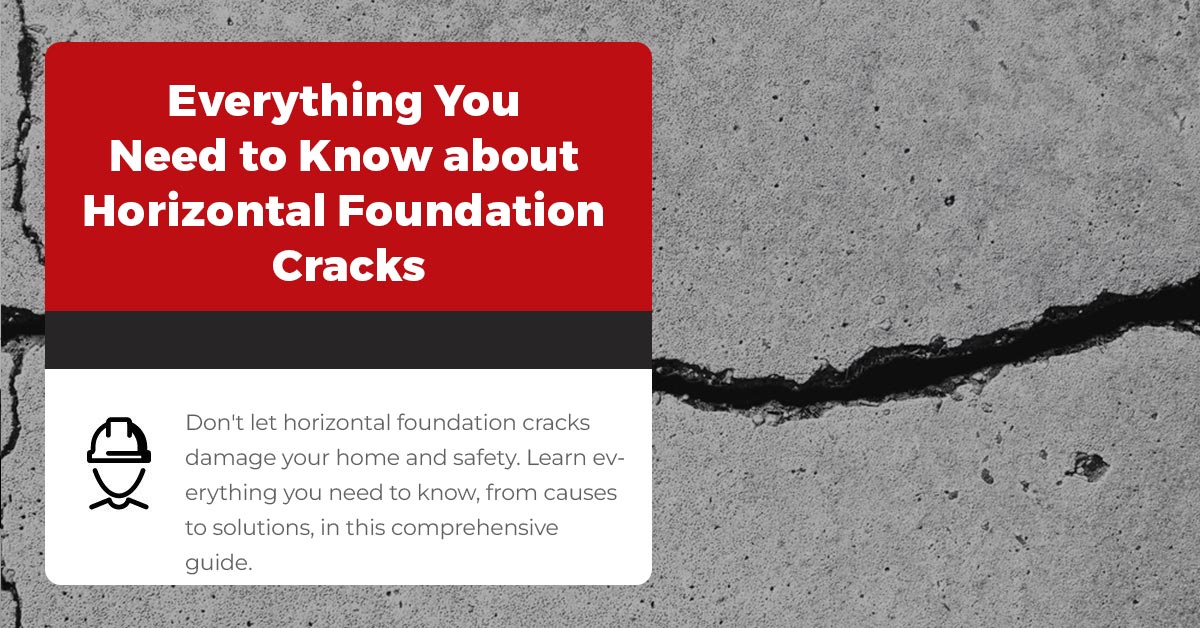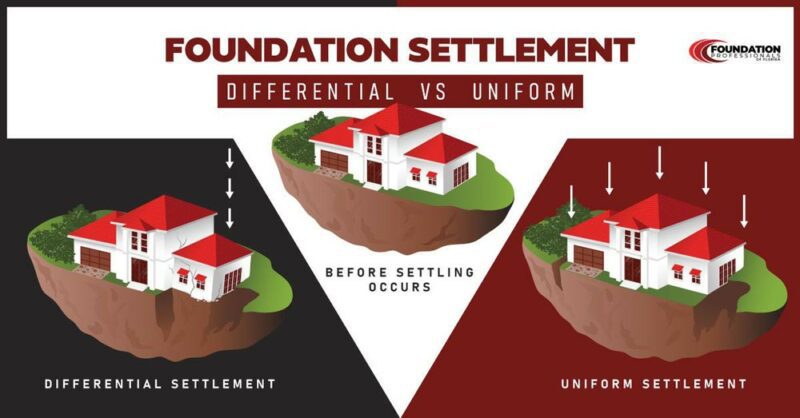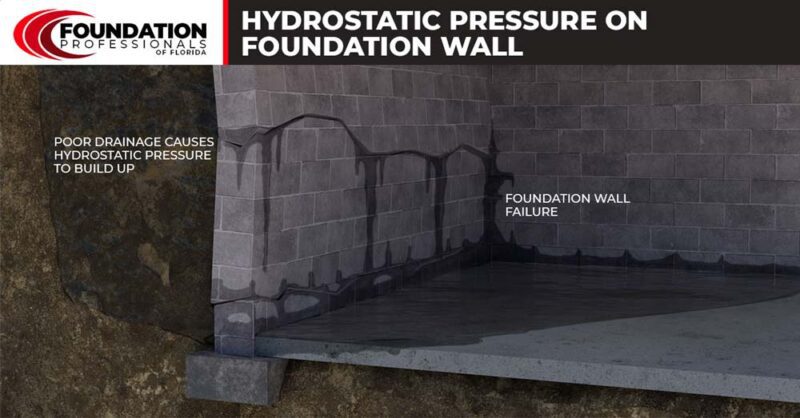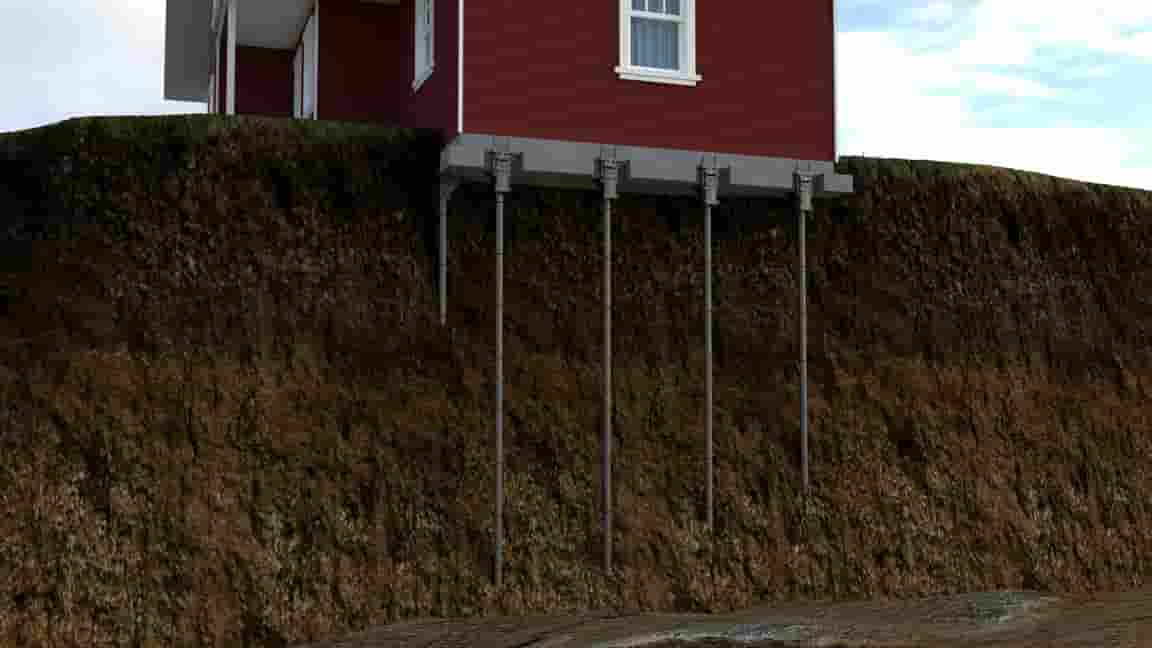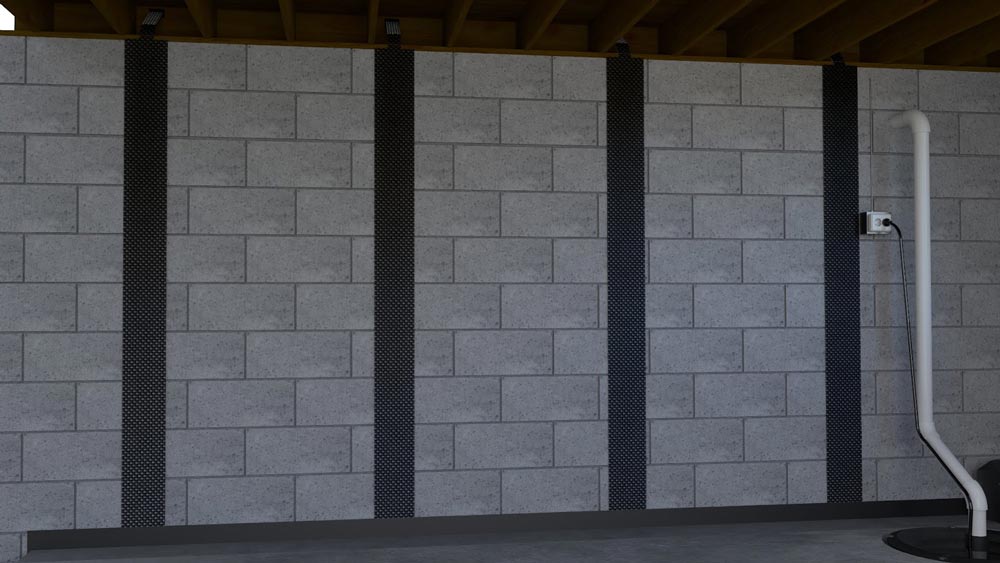A crack in your foundation is often a cause for concern. However, some cracks are more indicative of structural damage than others.
This article will discuss horizontal foundation cracks, why they form, and what you should do about them. Read on to learn what action you should take if you ever discover this kind of crack in your home.
How Do Horizontal Cracks Occur?
There are two main reasons why a horizontal crack will appear in your home’s foundation. Unfortunately, both causes typically indicate that your foundation will need repair.
Differential Settlement
Your home’s foundation rests on soil and relies on it for support. When that soil shifts or sinks, your foundation will shift and sink. This phenomenon is called foundation settlement, and it can affect any foundation.
A small amount of uniform settlement after construction is average and does not usually result in structural damage. However, there is another type of settlement that is far more worrisome. This form of settlement known as differential settlement involves significant uneven shifts that affect the structural integrity of your foundation and your entire home. When this detrimental form of settlement occurs, one of the warning signs is a horizontal crack in your foundation.
Hydrostatic Pressure
The second leading cause of horizontal cracks in a foundation is hydrostatic pressure. This term refers to the force that water places on its contact surfaces.
Your foundation is responsible for holding the significant weight of the soil behind it. When that soil becomes waterlogged, its force on your foundation will increase.
Sometimes, the combined force of the soil and the water becomes too much for your foundation to hold. When this occurs, it is common for a horizontal crack to form in your foundation wall.
What to Do About Horizontal Foundation Cracks
After finding a horizontal crack in your foundation, it is crucial to seek the help of a foundation professional to prevent further structural damage to your home. An experienced team will help diagnose the cause of your foundation crack and determine the most appropriate solution. The sections below will explore what some of those solutions may involve.
Fixing Foundations that Cracked Due to Differential Settlement
Resolving issues related to differential settlement is not a one-size-fits-all operation. Instead, the foundation professionals you hire must consider several factors, including the degree of settlement, the soil type, and more.
With that said, one of the most common ways to repair a foundation that has experienced differential settlement is by installing piers. Foundation piers come in several forms, but they all serve a similar purpose.
By inserting piers into the earth and connecting them to your foundation, your foundation team can make your foundation level again. The process also helps add stability to your foundation, making future differential settlement less likely.
After leveling your foundation, it is also essential to seal the crack. Sealing the crack will help prevent any air or moisture from seeping through the opening.
Resolving Cracks that Result from Hydrostatic Pressure
If your foundation cracks arise due to hydrostatic pressure, one of the best steps you can take is to improve drainage around your foundation. Enhanced drainage systems will help to convey water away from your home so that it does not place excessive pressure on the outside of your foundation.
Reducing and eliminating harmful hydrostatic pressure typically involves excavating around your home’s foundation. After excavating, a common drainage solution your trusted foundation professional will employ will include installing a perforated pipe at the base of your foundation. They will then fill the excavated area with a porous material such as crushed stone.
After that improvement, subsurface water will reach the crushed stone and seep into the perforated pipe. The pipe will then carry the water away from your home so that it does not cause hydrostatic pressure.
Still, improving your foundation drainage system is only a preventative measure against future hydrostatic pressure issues. If you need repairs for damage that has already occurred, you’ll need to seek a different method.
Two of the best ways to resolve damage and bowing in basement walls are by using carbon fiber straps or foundation wall anchors. Both of these pieces of repair equipment attach directly to the inside of your basement wall and help add strength and stability following damage from hydrostatic pressure. The best way to determine which of these methods is right for you is to consult a trusted foundation professional in your area.
When You Have Horizontal Foundation Cracks, You Need Professional Help
If you have a horizontal crack in your foundation, the best approach is to act quickly and contact a foundation professional in your area. Horizontal cracks typically indicate either differential settlement or hydrostatic pressure, which can cause ongoing structural issues that worsen with time.
Additionally, it is not reasonable for a homeowner to attempt to resolve these crack causes independently. Instead, if you want to get the job done right the first time, finding an expert to evaluate your foundation is necessary.
If you live in Florida, Foundation Professionals of Florida is the best team you can choose to fix any foundation problems. We offer foundation leveling, repair, pier installation, and more. Check out our site to learn more about our services and schedule a free estimate today!

